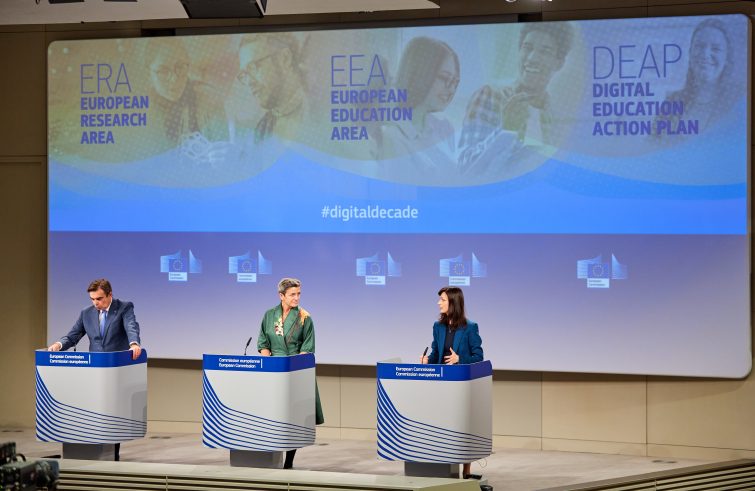
“Education and training have faced huge disruption due to COVID-19 and a quick shift to distance and online learning. The mass use of technology has revealed gaps and exposed weaknesses. This is also an opportunity to reset education and training for the digital age”, said Executive Vice-President for a Europe Fit for the Digital Age, Margrethe Vestager, reflecting on the events of the past months, disrupting – and occasionally reviving – European education and learning processes. It is also in the light of these circumstances that a few days ago the EU executive chaired by Ursula von der Leyen released three documents with guidelines in the area of education: firstly the Communication (this is the title of the Commission’s working paper) on achieving a European Education Area by 2025; then the Communication on European Research Area; finally, an updated Digital Education Action Plan 2021-2027.
 Response to the coronavirus crisis. The Commission thus adopted “two initiatives that will strengthen the contribution of education and training to the EU’s recovery from the coronavirus crisis, and help build a green and digital Europe.” Setting out a vision of the European Education Area to be achieved by 2025,
Response to the coronavirus crisis. The Commission thus adopted “two initiatives that will strengthen the contribution of education and training to the EU’s recovery from the coronavirus crisis, and help build a green and digital Europe.” Setting out a vision of the European Education Area to be achieved by 2025,
the Commission proposes “new initiatives, more investment and stronger cooperation of Member States to help all Europeans, of all ages, benefit from the EU’s rich education and training offer” in Member Countries.
Moreover, as previously mentioned, the Commission adopted a new Digital Education action plan “reflecting lessons learned from the coronavirus crisis, and devising a plan for a high-performing digital education ecosystem with enhanced digital competences for the digital transformation”, the EU Commission wrote in a release.
Direction, means and milestones. The European Education Area aims to further enrich the quality, inclusiveness and green and digital dimensions of education systems in all 27 EU Member States. The Commission points out that it shows “how together, Member States can shape a European Education Area based on freedom for learners and teachers to learn and work across the continent and for institutions to freely associate with one another in Europe and beyond.” The European Education Area is underpinned by six “dimensions”: quality, inclusion and gender equality, green and digital transitions, teachers, higher education, a stronger Europe in the world.
The Communication sets out the means and milestones to achieve the European Education Area within the next five years, supported by Europe’s Recovery Plan (NextGenerationEU) and the Erasmus+ Programme.
European summit in December. The Digital Education action plan envisages two strategic, long-term priorities: “fostering the development of a high-performing digital education ecosystem” and “enhancing digital competences for the digital transformation.” In the meantime the EU Commission is preparing the third European Education Summit, which the Commission will host online on 10 December “to bring Ministers and key stakeholders together to discuss how to make education and training fit for the digital era.”
“A mainstay of our European way of life.” Vice-President for Promoting the European way of live, Margaritis Schinas, said: “Education is a mainstay of our European way of life. Our vision for the European Education Area is deeply rooted in the values of freedom, diversity, human rights and social justice. Together with the Digital Education Action Plan, we propose new initiatives to learn and work together across the continent. For our youth, for our citizens, for our prosperity.”
 Need for greater knowledge. The Commission’s initiative will now be evaluated by the EU Council and Parliament both in political and financial terms.
Need for greater knowledge. The Commission’s initiative will now be evaluated by the EU Council and Parliament both in political and financial terms.
However, the Commission should be credited with having put forward a comprehensive project designed to enhance the education of young people, teachers and, in part, adults
in the awareness that in a complex and interconnected world, there is need for increased knowledge, with a focus on the digital and state-of-the-art technologies. The six “dimensions”’ focus on inclusion, ecology, teachers’ condition and openness to the rest of the world is noteworthy. Some reservations could arise, if anything, from the fact that emphasis is placed (albeit rightly so) on digital skills, and far less on social sciences, history, or a more comprehensive insight into different forms of cultural expression. Moreover, “competences” must always be combined with an educational and pedagogical dimension that extends beyond the knowledge of the subjects studied.











